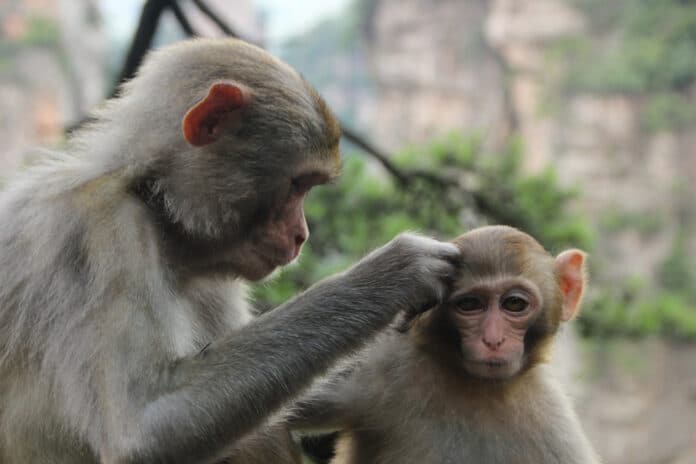The growing populations of monkeys and pigs worldwide have raised concerns about their potential risks to human health. These animals, known to carry various pathogens, can serve as reservoirs for infectious diseases that can be transmitted to humans. The interaction between expanding human settlements and natural habitats has facilitated the proliferation of monkey and pig populations, increasing the likelihood of disease transmission between species. This study explores the potential risks associated with the rising populations of monkeys and pigs and their implications for human health.
The booming populations of wild pigs and macaque monkeys in Southeast Asia are posing significant threats to native forests and increasing the risk of disease outbreaks in livestock and humans, as revealed by research led by The University of Queensland. Dr. Matthew Luskin and his team compiled and analyzed population data from various sources, including data collected through a network of cameras.
Dr. Luskin said, “Macaques and wild pigs are taking over Southeast Asia’s disturbed forests. Humans are largely to blame for this by altering forests with logging and establishing palm oil farms which provide food and ideal breeding conditions for these animals. We saw that wild boar and macaque numbers were 400 percent higher in forests near the plantations than in new environments. These animals take full advantage of the farmland, raiding crops and thriving on calorie‐rich foods.”
While setting and monitoring camera traps, Dr. Luskin had a firsthand experience with the rapidly increasing populations. He encountered large groups of macaque monkeys in Thailand, Malaysia, and Indonesia, with the monkeys closely following the researchers and causing disruptions to their equipment. Initially frustrating, the situation soon became eerie as they were surrounded by the macaque troops at the forest edges.
Dr. Luskin emphasized the significant human health risks associated with the increasing populations of pigs and macaque monkeys. He highlighted the role of wildlife in hosting high pathogen loads and serving as potential sources of zoonotic diseases, as demonstrated by the origins of the COVID-19 pandemic. Both pigs and macaques have known carriers of diseases that can be transmitted to humans, and the region where their populations are booming is considered a global hotspot for zoonotic diseases.
Professor Carlos Peres, a collaborator from the University of East Anglia, added that densely settled rural areas in Southeast Asia, characterized by human-modified tropical forests, maybe a source of future human epidemics due to abnormally high populations of disease reservoir wildlife species.
Jonathan Moore, a Ph.D. candidate from the University of East Anglia (UK) and the Southern University of Science and Technology (China), highlighted the visible impacts of population explosions on native flora in affected regions. According to Moore, pigs, and macaque monkeys have adverse cascading effects on pristine ecosystems. They destroy seeds and seedlings of native plants and consume bird and reptile eggs. In the case of Malaysian pigs, their presence alone led to a significant reduction of 62% in rainforest tree regeneration.
The researchers emphasize the necessity of taking action to minimize the population expansions of wild pigs and macaque monkeys. Previous attempts to manage these species have failed due to their fast reproductive capacity and public resistance to culling. Dr. Luskin acknowledges the ethical concerns surrounding the unnecessary killing of wildlife but stresses the need for urgent management solutions to address the negative social and ecological impacts caused by these hyperabundant pest species.
The rise in monkey and pig populations presents a significant risk for human disease transmission. Zoonotic diseases from these animals can have severe consequences, ranging from mild illnesses to potentially fatal infections. The proximity between humans and these animals increases the chances of exposure to their pathogens, especially in regions where human settlements encroach upon natural habitats. Factors such as inadequate sanitation, poor hygiene practices, and limited veterinary surveillance compound the disease transmission risks.
The increasing populations of monkeys and pigs pose a significant human disease risk. Addressing this issue requires a multidisciplinary approach involving wildlife conservation, agricultural practices, public health initiatives, and enhanced surveillance and monitoring of zoonotic diseases.
Effective measures to mitigate the potential for disease transmission should focus on promoting awareness, implementing proper hygiene practices, and ensuring appropriate veterinary care and disease control measures for animals and humans. By understanding and addressing the risks associated with rising monkey and pig populations, we can work towards minimizing the impact of zoonotic diseases on human health and well-being.
Journal Reference:
- Jonathan H. Moore, Luke Gibson, et al. The rise of hyperabundant native generalists threatens both humans and nature. Biological Reviews. DOI:10.1111/brv.12985.
